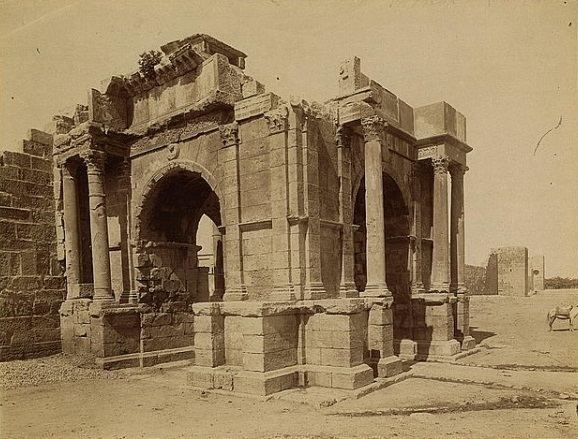Location Algeria | ||
 | ||
Weather 7°C, Wind SW at 11 km/h, 76% Humidity | ||
Theveste was a Roman-Berber colony situated in the present Tébessa, Algeria.
Contents
History
In 146 BC, the Romans conquered the region, where existed an old city called "Tbessa". Theveste was founded by the Romans in 75 AD near an old Berber village located next to the Aurès Mountains, in order to control the mountain region.
During the 1st century CE, the Legio III Augusta resided there before being transferred to Lambaesis. It was made a colonia probably under Trajan.
Theveste flourished under Septimius Severus reaching a population calculated in nearly 30,000 inhabitants, and was even an important Dioceses See.
There is mention of a council held there by the Donatists. Among its saints were St Lucius, its bishop, who in 256 AD assisted at the Council of Carthage and died as a martyr two years later; St Maximilianus, martyred 12 March, 295 AD; St Crispina, martyred 5 December, 304 AD. Some of its bishops are known: Romulus in 349 AD; Urbicus in 411 AD; Felix exiled by the Vandals in 484 AD; Palladius mentioned in an inscription.
During the 4th and 5th century AD Thebeste was a centre of Manichaeism as well. In June 1918 a codex of 26 leaves written in Latin by Manichaeans was discovered in a cave near the city.
Theveste was raided by the Vandals, but it was rebuilt at the beginning of the reign of Justinian I by the patrician Solomon. He erected a tomb there, which still exists. The city was nearly destroyed by Umayyad Caliphate forces, but a small village (probably initially populated by a few surviving Christian Berbers) remained for centuries.
Modern Tebessa is very rich in ancient monuments, among them being a triumphal arch of Caracalla, a temple, a Christian basilica of the 4th century and the huge walls.
Main architectural remains
Around the Roman Forum it is possible to see even today the remains of:
